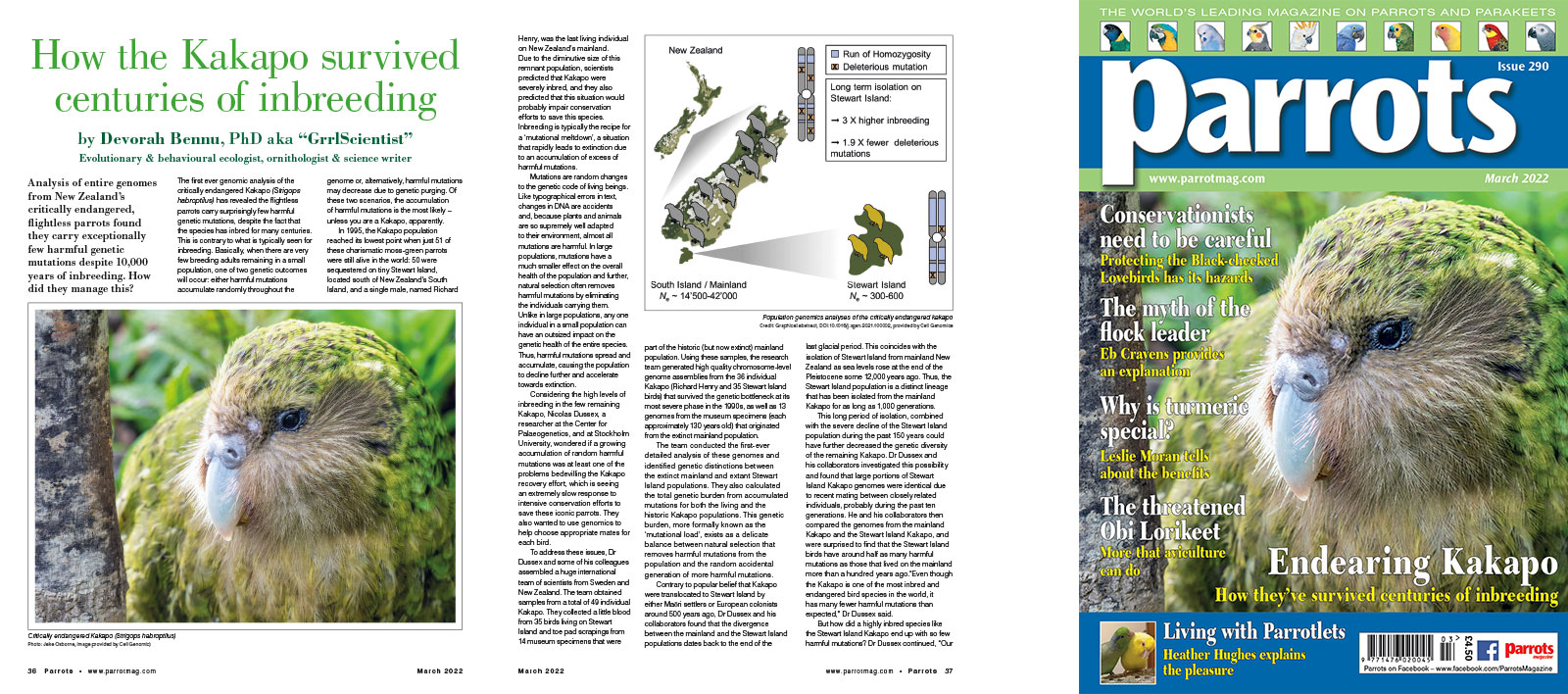
by Devorah Bennu, PhD aka “GrrlScientist”
Analysis of entire genomes from New Zealand’s critically endangered, flightless parrots found they carry exceptionally few harmful genetic mutations despite 10,000 years of inbreeding. How did they manage this?
The first ever genomic analysis of the critically endangered Kakapo (Strigops habroptilus) has revealed the flightless parrots carry surprisingly few harmful genetic mutations, despite the fact that the species has inbred for many centuries. This is contrary to what is typically seen for inbreeding. Basically, when there are very few breeding adults remaining in a small population, one of two genetic outcomes will occur: either harmful mutations accumulate randomly throughout the genome or, alternatively, harmful mutations may decrease due to genetic purging. Of these two scenarios, the accumulation of harmful mutations is the most likely – unless you are a Kakapo, apparently.
In 1995, the Kakapo population reached its lowest point when just 51 of these charismatic moss-green parrots were still alive in the world: 50 were sequestered on tiny Stewart Island, located south of New Zealand’s South Island, and a single male, named Richard Henry, was the last living individual on New Zealand’s mainland. Due to the diminutive size of this remnant population, scientists predicted that Kakapo were severely inbred, and they also predicted that this situation would probably impair conservation efforts to save this species. Inbreeding is typically the recipe for a ‘mutational meltdown’, a situation that rapidly leads to extinction due to an accumulation of excess of harmful mutations.








Parrot Chat
Buyers Guides
Breeding articles